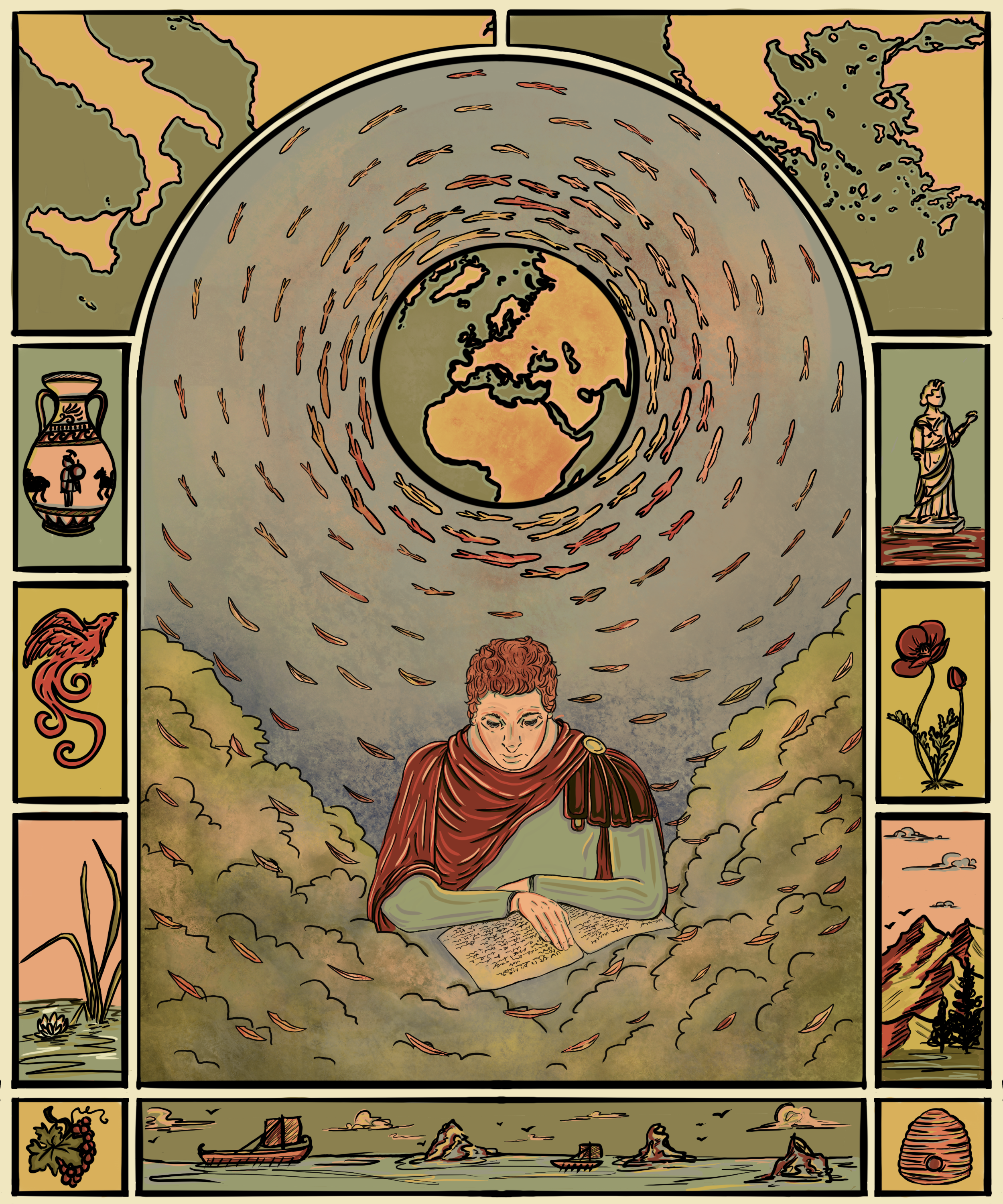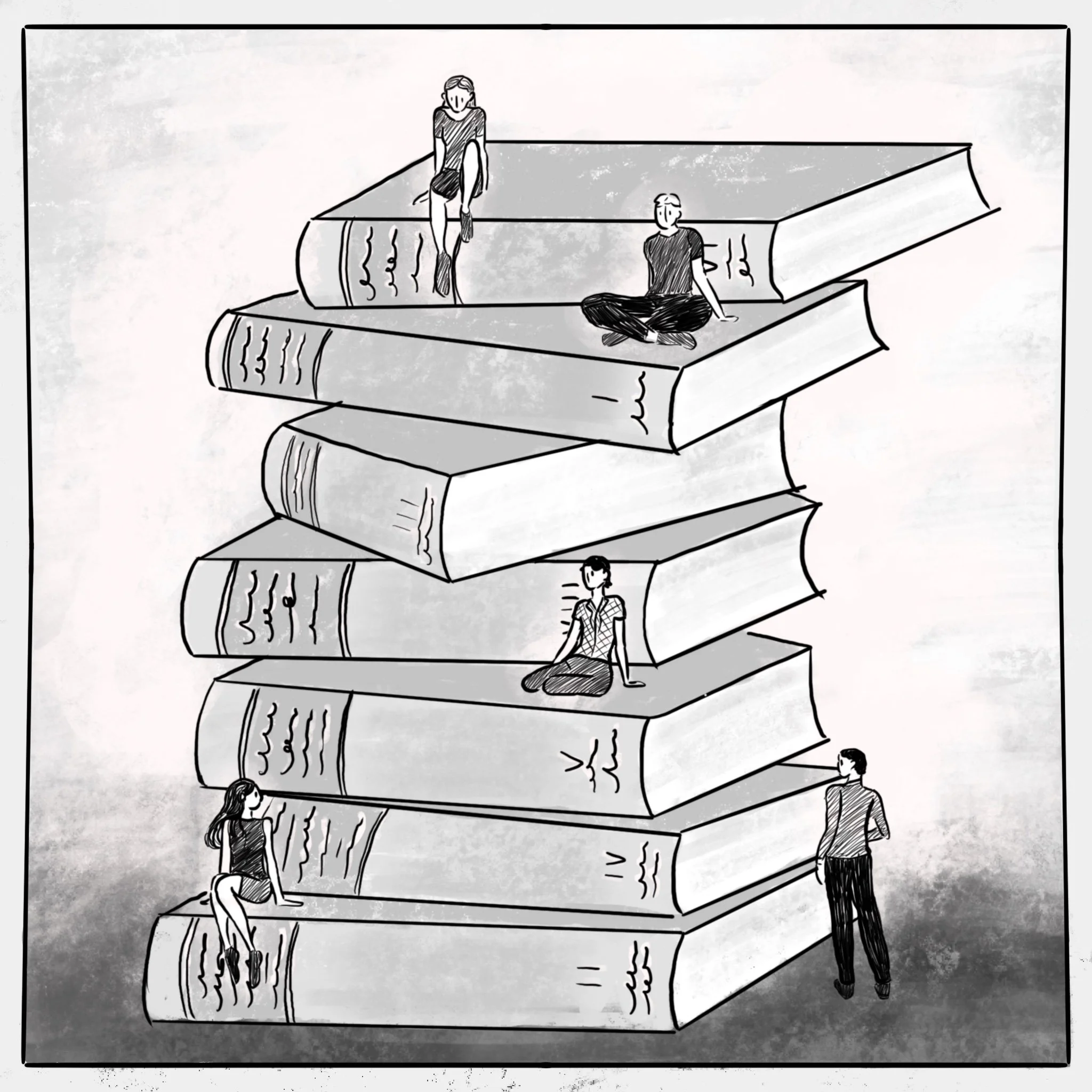Locating Legends: Pliny’s Take on Myth
Written by Claudia Kappely
For our PACE internships this semester Ariella Aird, Mitchell Clark, Victoria Kassis, Xavier Trott, and I were tasked with tackling Pliny the Elder’s Natural History for MANTO.
This 37 book encyclopaedia catalogues a vast range of subjects and is the longest single work that survives to us from the Roman world.
Illustration: C. Kappely.
Whilst working through Natural History I began doodling and then properly drawing and illustrating the image above. I wanted to include a nod to the diverse range of topics that Pliny covers through the different volumes. Framed around the border are some of the mountains, oceans, plants, creatures, artworks and maps that Pliny mentions. What impressed me the most about Natural History was Pliny’s ambition to capture his entire world.
After dividing up the work I was tasked with book 4, the geography of Eastern and Northern Europe. For the most part this meant locating places, identifying alternative names, and trying to work out where exactly Pliny was talking about at any one time.
I was incredibly grateful for The Geography of Pliny the Elder, a fantastic site that maps and links locations in Natural History to the Pleiades database of ancient places.
In book 4 Pliny draws plenty of connections between mythic and tangible places. In 4.53 he talks about The Rock that Odysseus’ ship was transformed into by Poseidon. Traditionally, The Rock of the Ship is identified as being in the harbour of Scheria, the unlocatable home of the Phaeacians. Pliny suggests that it is off the coast of Corcyra. So, here he records an attempt to reinterpret a mythic narrative to fit known landscapes.
Book 10 was my favourite and all about birds! Again Pliny makes connections between place and myth in interesting and specific ways. In 10.61.1 he gives a physical explanation for the myth that Diomedes' comrades were transformed into birds (Ov. Met. 14.499-547). He says that, on the Island of Diomedes, the location of Diomedes tomb and shrine, there lived plunger-birds who cry and scream when non-Greeks visit, but are silent when Greeks do. They thus seem to honour the descendants of Diomedes. Thus, the legend that Diomedes’ comrades were transformed into these birds can be traced back to a tangible location.
In books 33-37 Pliny tackles mining and mineralogy whilst highlighting famous works of art that were created using these resources. To capture the data for these sections we were introduced to the Lexicon Iconographicum Mythologiae Classicae (LIMC). This comprises twenty very large encyclopaedias cataloguing visual depictions of myth from classical antiquity. Because the entries can be in German, French, or Italian as well as English, this section of Natural History was certainly the most time consuming.
Illustration: C. Kappely.
Armed with the translate app I took on book 34, Pliny’s account of bronze sculptures. This section is rich with mythic detail. His description in 34.77 lays out the key features of Paris’ story in one sentence: he describes a statue by Euphranor as, “praised because it conveys all the characteristics of Paris in combination - the judge of the goddess, the lover of Helen and yet the slayer of Achilles.” (Pliny, NH 34.77, trans. Harris Rackham). Here Pliny gives us insight into the value of sculpture beyond aesthetics. We see its function as visual shorthand for mythological knowledge viewers were expected to possess.
Overall, Pliny’s Natural History tells us a great deal about Roman understandings of myth from a physical and cultural point of view.
This has been a fantastic experience and I have deeply enjoyed getting to work on MANTO and Pliny. A very big thank you to Greta Hawes for facilitating and providing this opportunity. Thank you as well to Yvonne Inall and those at the Gale History Museum for allowing us to work in their space.


